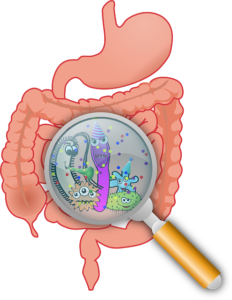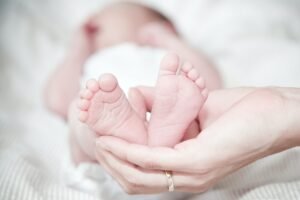Conceiving and carrying a pregnancy to term are complicated processes that generally work out for most women. However, we must be mindful that many things can, and do, go wrong during these processes leading to female infertility.
For this reason, we have collated articles addressing the common causes of infertility in women and provided information and courses of action that women can take to increase fertility.
 Female infertility is generally described as when a woman isn’t able to fall pregnant or carry out a pregnancy after 1 year, or 6 months if she is 35 and older.
Female infertility is generally described as when a woman isn’t able to fall pregnant or carry out a pregnancy after 1 year, or 6 months if she is 35 and older.
It’s fairly common, with around ten percent of women having problems with their fertility, with this increasing as they get older.
The causes of infertility are mostly due to problems with ovulation, usually apparent with irregular or missed periods. Without ovulation there are no eggs to be fertilised.
There are many things that can lead to infertility in women, with some involving a variety of factors, but the most common causes are shared below (scroll down, below our ‘Information & Guidance’ articles, to see the 7 Causes of Women’s Infertility).
Information and Guidance on Female Infertility
Pregnancy After 40: Importance of Preconception Counseling
 For women, pregnancy after forty presents some hurdles. Now more than ever, women are having children later in their lives. Fertility treatments, increased technology in prenatal care and professional guidance have helped to make this possible. Women no longer need to feel rushed into motherhood.
For women, pregnancy after forty presents some hurdles. Now more than ever, women are having children later in their lives. Fertility treatments, increased technology in prenatal care and professional guidance have helped to make this possible. Women no longer need to feel rushed into motherhood.
They are able to build their careers, travel, save money and buy a home (among many other things) before settling down to start a family.
Pregnancy after forty does come with some increased risks, but preconception counseling can help identify and reduce infertility risks for women at an advanced maternal age.
Probiotics and Fertility Part 1
 In this post I’ll be discussing probiotics increasing fertility- that is, the little beneficial critters that thrive in our gut!
In this post I’ll be discussing probiotics increasing fertility- that is, the little beneficial critters that thrive in our gut!
Doctors and nutritionists agree that these probiotic bacteria are one of the most important aspects to women’s overall health and well being.
Dr. McDougall refers to them in his book, Digestive Tune-up, as “so important to our health and survival that they should be thought of as a vital organ”. In Carolee Bateson-Koch’s book, Allergies, she writes that the cultivation of these bacteria “can mean the difference between radiant health and chronic debilitating conditions”.
Probiotics and Fertility Part 1 continued…
Probiotics and Fertility Part 2
 More on those critters in our gut…
More on those critters in our gut…
Probiotics and Fertility- An Unbalanced Vaginal Microbiome.
Research has discovered a connection between the microbiome and infertility in men and women, and how probiotics can help improve fertility. Abnormal vaginal microbiota has been found to negatively impact birth rate as outlined in the following studies:
Probiotics and Fertility Part 2 continued…
Pregnancy After 30- Weighing Up The Risks
 In this day and age, many women choose to hold off having children until later in life. This decision comes with women having greater independence from the past. Sometimes their decision to wait is based on being financially sound or establishing a career. It may also be due to not finding the right partner, or other reasons that are unique to this day and age. Whatever the case, having a baby after 30 comes with its risks.
In this day and age, many women choose to hold off having children until later in life. This decision comes with women having greater independence from the past. Sometimes their decision to wait is based on being financially sound or establishing a career. It may also be due to not finding the right partner, or other reasons that are unique to this day and age. Whatever the case, having a baby after 30 comes with its risks.
Pregnancy After 30- Weighing Up The Risks continued…
7 Causes of Female Infertility
1. PCOS
Polycystic Ovarian Syndrome, also known as PCOS, is a hormone imbalance in a woman’s ovaries and, more rarely, adrenal glands in which hormones such as androgen and other male hormones are produced in higher quantities.
This imbalance can interfere with a woman’s ability to ovulate every month, can even affect the way her egg matures and is one of the most common causes of infertility.
Doctors aren’t exactly sure what causes PCOS, however suggest that genetics may play a part, and that it changes the lives of over 5 million US women of reproductive age.
2. POI
 Primary Ovarian Insufficiency, commonly known as POI, is a condition that occurs when a woman’s ovaries stop working properly before the age of 40, by not producing hormones and eggs properly.
Primary Ovarian Insufficiency, commonly known as POI, is a condition that occurs when a woman’s ovaries stop working properly before the age of 40, by not producing hormones and eggs properly.
This causes women to ovulate very irregularly and female infertility is more common for women with this condition, however, isn’t definite.
5% – 10% of women with POI are still able to fall pregnant without medical support.
The cause of POI is related to having problems with small sacs in the ovary called follicles, where eggs are grown and mature. POI is a separate issue to premature menopause.
3. Aging and its Impact on Female Infertility
Aging is another potential cause for infertility in women. This is because of a few reasons, like older women naturally having a smaller store of eggs left that can be fertilised, with the eggs they do have being less healthy than the general young girl.
An older woman is also more likely to have separate health conditions that can affect fertility, and eggs may struggle to be released as easily due to her weaker ovarian health.
Studies show that 60% of women aged around 35 have the ability to naturally conceive within the first-year bracket, decreasing to 40% of women by the time they are 40.
4. STIs and STDs
Untreated sexually transmitted infections or diseases (STI/STDs) such as chlamydia, gonorrhoea and syphilis can affect the fertility of women in various ways. For example, an STI like chlamydia can lead to pelvic inflammatory disease (PID), which in turn can cause scarring that may damage the uterus and surrounding tissue or can block the fallopian tube in women. This tube is the passage in which eggs travel through to be fertilised.
Some untreated STIs and STDs may not cause infertility, however, can cause birth problems further down the track, such as increasing the chance of stillbirths. For example, an untreated syphilis infection pre-conception has a 50% chance of the pregnancy ending in miscarriage or stillbirth.
Fortunately, this may be prevented by getting tested for various STIs and STDs as early into the conception stage as possible.
5. Female Infertility and Endometriosis
Endometriosis is a condition in which the cell tissue that usually lines the inside of a woman’s uterus, instead lines the outside of it, commonly known for causing strong menstrual pelvic pain.
The exact link between endometriosis and female infertility problems is unknown, however some theories include this condition changing the structure of female reproductive organs.
This could inhibit an eggs ability to move through the fallopian tube. Abdomen lining may also go through changes for women with endometriosis, such as having increased fluid, all contributing to changes in the function of eggs and sperm and increasing the chance of female infertility.
Endometriosis affects around 10% of women of reproductive age around the world.
6. Uterine Fibroids
Another contribution to fertility issues in women are growths formed in the uterus called uterine fibroids.
These growths are very rarely cancerous, and their symptoms are occasionally not able to be detected. The symptoms that are detectable can include heavy and long-lasting menstrual bleeding, severe cramps and constipation.
Uterine fibroids won’t always, but have the potential to, cause female infertility based on the position of their growth. If they grow in a way that blocks the fallopian tube, they can prevent the ability of eggs or sperm to move through that passage.
If they change the position of the cervix, or the shape of the uterus, it can negatively impact the number and movement of sperm entering the uterus, giving females less chance to fall pregnant. Such fibroids are present in about 10% of infertile women.
7. Lifestyle and Environmental Factors that Link to Female Infertility
It’s important to note how general lifestyle habits and a woman’s environment can affect her ability to fall pregnant.
Lifestyle factors such as nutrition, weight and exercise may inhibit the health in a woman, and therefore her fertility. Studies show obesity, being underweight or excessive exercising can negatively impact the health of a woman’s ovaries and eggs.
Environmental factors such as psychological stress and overexposures to pesticides, chemicals and radiation have the potential to reduce fertility health. Along with substance, drug and medication use and abuse, which can hinder the ability the conceive, and decreases the chance of carrying a baby to full- term.
In Conclusion
These causes of infertility in women are distinct and require specific treatments and changes. A woman who is having difficultly conceiving or carrying a pregnancy to term should always talk to their health-care professional.
However, some remedies that can encourage natural conception are noted here. Along with this extensive review of Lisa Olsen’s Pregnancy Miracle program, a 6-week program to help natural pregnancy, found here.
